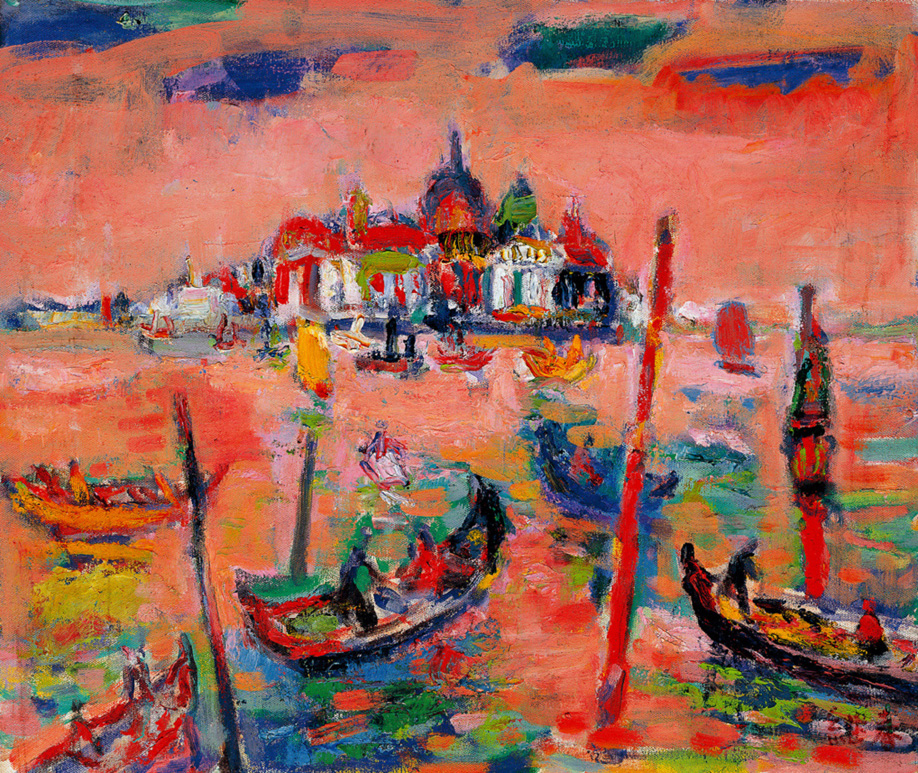EXHIBITED:
East Gallery - September Joined Exhibition, East Gallery, Taipei,August 10, 1991
Explorers of Western Art In The Early Years of The Republic of China,Lin & Keng Gallery,Taipei, June 15-28,1996
ILLUSTRATED:
Explorers of Western Art In The Early Years of The Republic of China, Lin & Keng Gallery, Taipei, 1996, color illustrated, p. 29;
white & black illustrated, p. 123
PROVENANCE:
Gift of the artist to Mr. Senda
East Gallery, Taipei
Acquired directly from the above by the present owner in 1991.
Catalogue Note:
Text / Hsi-Chiang Wu
When Liao Chi-chun returned to Taiwan from Europe and America in 1962, the Taiwanese art critics commented that his work has been influenced by Fauvism. Undoubtedly, in his journey, European and American arts have affected him and, therefore, Liao has started his search for a new style. But what school exactly has influenced him? Due to the lack of written records, there is no way to find out. However, Liao's eclectic style certainly has its importance in the development of Art in Taiwan.
Many have suggested that Liao might be influenced by Umehara Ryuzaburo or Fauvism; they have also described his work as Fauvist. But when comparing the characters of Fauvism in their active years (1905-06) with Liao's work, the two have apparent fundamental differences. They might have similarities in how they liberate the existing colors in nature; but without the savage expression of forms and colors, Liao's interpretation of natural scenery is rather sincere, elegant and romantic.
After his travel in Europe and in America, Liao has created a series of European landscape. They are not painted on location but reinterpretations of impressions based on photographs, postcards, or quick sketches. This way of creating has gone beyond the Impressionist idea of painting. By giving up a realistic representation, he concentrated on his inner sentiment and the search of natural forms, colors, lines and their interacting rhythm.
From the Renaissance to Impressionism, the subtlety of the changing reflections of the sky and water in Venice attracts numerous painters to discover its diversity. Liao has also portrayed the beauty of Venice. The finish date of this piece of work is around the 1960s. (Explorers Of Western Art In The Early Years Of The Republic Of China, published by Lin & Keng Gallery, 1996) In Venice, the endless horizon has turned into the romantic color pink, decorating the blue clouds, and swings with the front rope-tying sticks and ships. The reflection sways and the colors layer on each other. The brush marks are colorful and abundant. In the distance, the color blocks decorate the lightened side of the church. Boats float around the church, the scene in the distance echoing the front. Liao's interpretation of Venice does not emphasize on the pursuit of the outlook or the subtle changes of the light and water, which the Impressionists are good at, but the romantic yearning rebuilt by colors, brush marks, lines and the interactions between reality and fiction. And this has also become Liao's passion to create his later landscape paintings.
The creative spirit of the piece succeeds from "Toledo, Spain"(1975) and reaches its creative peak. Appreciating Liao's landscape paintings is just like listening to his whispering sentiments in the past...
